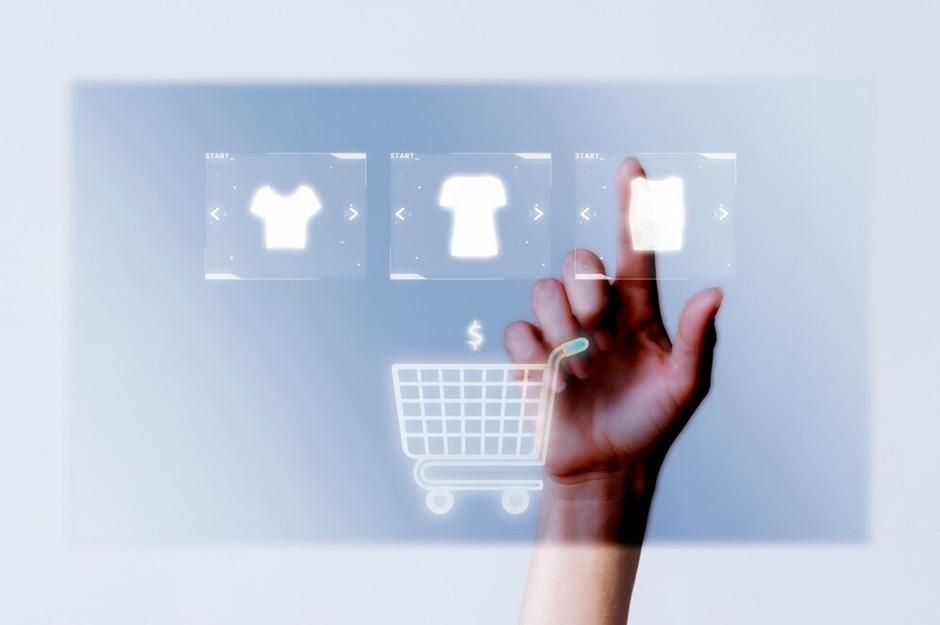Uncategorized
Shopify vs. Amazon: How Personalization is Shifting the E-commerce Landscape

Amazon has long been the undisputed king of e-commerce, offering unmatched convenience, vast product selection, and lightning-fast delivery. But as the online shopping landscape evolves, a new contender is emerging: Shopify.
While Amazon excels at scale, Shopify is winning hearts with something far more intimate—personalization. From custom product recommendations to unique shopping experiences, Shopify stores are proving that bigger isn’t always better. So, what does this shift mean for the future of e-commerce, and how can brands adapt to stay ahead?
The Amazon effect: Convenience at the cost of personalization
Amazon’s success is built on efficiency. With millions of products available at the click of a button, it’s the go-to destination for shoppers seeking speed and convenience. But this scale comes at a cost: a one-size-fits-all approach that leaves little room for personalization.
On Amazon, customers are just another number in a vast sea of transactions. Product recommendations are often based on generic algorithms, and the shopping experience feels impersonal. For brands, this lack of connection can make it difficult to build loyalty or stand out in a crowded marketplace.
For example, if you search for “men’s running shoes” on Amazon, you’ll see a list of popular products, but they won’t necessarily reflect your specific needs or preferences. The platform’s algorithm prioritizes sales volume and reviews over individualized recommendations, which can leave customers feeling overlooked.
How Shopify empowers brands to create unique customer journeys
Unlike Amazon, Shopify gives brands the tools to craft personalized shopping experiences that resonate with their audience. From customizable storefronts to integrated apps, Shopify stores can offer everything from tailored product recommendations to made-to-order items.
For example, a product personalizer allows brands to let customers design their own products, whether it’s a custom-engraved watch or a pair of sneakers in their favorite colors. This level of involvement not only increases customer satisfaction but also creates a sense of ownership that fosters loyalty.
Shopify’s flexibility also extends to marketing. Brands can use customer data to send personalized emails, create targeted ads, and even offer exclusive discounts based on individual preferences. These strategies help brands build deeper connections with their customers, something that’s nearly impossible on Amazon.
Take the case of a small jewelry brand that uses a product personalizer to let customers design their own engagement rings. By offering this level of personalization, the brand not only differentiates itself from competitors but also creates a memorable experience that customers are likely to share with others.
Case studies: Brands winning with personalized shopping experiences
Several brands have successfully leveraged Shopify’s tools to create standout shopping experiences. Here are a few examples:
- Pepper: This intimate apparel brand uses a fit quiz to recommend the perfect bra size, reducing returns and increasing customer satisfaction. By asking about body shape and preferences, Pepper ensures that customers find the right fit without the hassle of trial and error.
- Thinx: Known for its period-proof underwear, Thinx uses a quiz to guide customers to the products that best suit their needs, resulting in higher conversion rates. The brand’s “Know Your Flow” tool has a 99% completion rate and significantly boosts mobile sales.
- KaiKini: This swimwear brand offers custom-made suits, allowing customers to input their measurements and preferences for a perfect fit. The brand’s virtual concierge service adds a personal touch, making customers feel valued and understood.
These brands demonstrate how personalization can turn a simple transaction into a memorable experience, setting them apart from competitors on platforms like Amazon.
The future of e-commerce: Will personalization dethrone the giants?
As consumer expectations continue to evolve, personalization is becoming a key differentiator in the e-commerce space. While Amazon’s scale and efficiency are hard to beat, its lack of personalization could become a liability in the long run.
Shopify, on the other hand, is well-positioned to capitalize on this trend. By empowering brands to create unique, customer-centric experiences, Shopify is redefining what it means to shop online.
But the battle is far from over. Amazon has the resources to adapt, and it’s likely only a matter of time before it introduces more personalized features. For now, though, Shopify has the upper hand when it comes to building meaningful connections with customers.
What does this mean for brands?
For brands, the rise of personalization presents both opportunities and challenges. On one hand, it’s a chance to differentiate themselves and build lasting relationships with their customers. On the other hand, it requires a shift in mindset—from focusing on scale to prioritizing individual experiences.
The key is to find the right balance. Brands that can combine the convenience of Amazon with the personalization of Shopify will be the ones that thrive in the future of e-commerce.
For example, a brand could use Amazon for its vast reach and logistics while leveraging Shopify to create a personalized, direct-to-consumer experience. This hybrid approach allows brands to maximize their strengths and cater to different customer segments.
The role of technology in shaping the future
Advancements in technology are making personalization more accessible than ever. Tools like AI-powered recommendation engines, augmented reality (AR), and product personalizers are enabling brands to deliver tailored experiences at scale.
For instance, AR tools allow customers to visualize products in their own space, reducing uncertainty and returns. Meanwhile, AI algorithms analyze customer data to suggest products they’re likely to buy, boosting average order value.
These technologies are leveling the playing field, allowing smaller brands to compete with giants like Amazon. By investing in the right tools, brands can create personalized experiences that resonate with their audience and drive long-term loyalty.
A new era of e-commerce
The e-commerce landscape is undergoing a seismic shift, with personalization at the forefront. While Amazon continues to dominate in terms of scale and convenience, Shopify is carving out a niche by empowering brands to create unique, customer-centric experiences.
For brands, the challenge is to embrace this shift and find ways to stand out in a crowded market. Whether it’s through personalized product recommendations, custom designs, or seamless post-purchase experiences, the brands that prioritize personalization will be the ones that thrive in the future of e-commerce.
Uncategorized
Barbells and Beyond: The Allure of Apadravya Piercing

Apadravya piercing is a type of genital piercing primarily performed on the penis. It involves the insertion of a barbell horizontally through the glans of the penis, passing through the urethra. This piercing is known for its aesthetic appeal and potential enhancement of sexual pleasure.
The History and Cultural Significance of Apadravya Piercing
The practice of genital piercing dates back centuries and holds cultural significance in various societies worldwide. Historically, genital piercings were associated with rituals, rites of passage, or markers of social status. In some cultures, genital piercings were believed to enhance fertility or sexual potency.
Understanding the Procedure
Preparing for Apadravya Piercing
Before undergoing an Apadravya piercing, it’s crucial to choose a reputable and experienced piercer. Additionally, proper hygiene and genital grooming are essential to reduce the risk of infection during and after the procedure.
The Piercing Process
During the piercing process, the piercer will clean and sterilize the genital area before marking the entry and exit points for the piercing. Local anesthesia may be administered to minimize discomfort. The piercing needle is then carefully inserted, followed by the insertion of the barbell.
Aftercare and Healing
After the piercing, diligent aftercare is essential to promote proper healing and reduce the risk of complications. This includes cleaning the piercing with saline solution, avoiding sexual activity or rough handling of the piercing, and wearing loose-fitting clothing to prevent irritation.
Pain, Risks, and Safety Concerns
While Apadravya piercing is generally considered safe when performed by a professional, it is not without risks. Pain levels vary from person to person, but most individuals report moderate discomfort during the procedure and mild to moderate pain during the healing process.
Choosing Jewelry for Apadravya Piercing
Selecting the right jewelry for an Apadravya piercing is crucial for both aesthetics and comfort. Surgical-grade stainless steel or titanium barbells are commonly recommended due to their biocompatibility and durability.
ALSO READ: THIGH TATTOOS: A CANVAS OF EXPRESSION AND STYLE
Apadravya Piercing: Myths vs. Facts
There are many misconceptions surrounding Apadravya piercing, including beliefs about pain, sexual function, and hygiene. It’s essential to separate fact from fiction to make informed decisions about genital piercing.
Pros and Cons of Apadravya Piercing
Like any form of body modification, Apadravya’s piercing has its advantages and disadvantages. Pros may include aesthetic appeal, potential sexual enhancement, and personal expression, while cons may include pain, risks of infection, and social stigma.
Conclusion
Apadravya piercing is a significant form of self-expression and body modification with a rich history and cultural significance. By understanding the procedure, risks, and aftercare involved, individuals can make informed decisions about whether Apadravya piercing is right for them.
ALSO READ: MEMENTO VIVERE TATTOO: A TIMELESS REMINDER
FAQs
What is Apadravya?
Apadravya is a genital piercing where a barbell is inserted horizontally through the glans of the penis, passing through the urethra. It is valued for its aesthetic appeal and potential sexual enhancement.
Is Apadravya piercing painful?
Pain levels vary, but most people experience moderate discomfort during the procedure and mild to moderate pain while healing. Proper aftercare can help alleviate discomfort.
How can I find a reputable piercer for Apadravya piercing?
Look for experienced piercers with positive reviews and strict hygiene standards. Check their portfolio and ask about their sterilization practices before making an appointment.
Are there age restrictions for getting an Apadravya piercing?
Typically, individuals must be at least 18 years old. Some piercers may require parental consent for minors.
Can Apadravya’s piercing affect sexual function?
While rare, complications like nerve damage or scarring can affect sexual function. It’s important to consult with a qualified piercer about any potential risks.
Uncategorized
The Game Archives Gameverse Unveiled

Welcome to the exciting world of Game Archives Gameverse, where gaming history meets cutting-edge technology to create a gaming platform like no other. Dive into this immersive universe where classic games and modern innovations collide to offer gamers an unparalleled experience. Join us as we explore the evolution, features, successful case studies, and future plans of the Game Archives Gameverse – your gateway to endless gaming possibilities!
The History and Evolution of Game Archives
The history and evolution of game archives is a fascinating journey through the digital landscape of gaming. It all began with humble beginnings, where gamers sought ways to preserve their favorite games for future enjoyment. As technology advanced, so did the methods of archiving these virtual worlds.
From early floppy disks to CDs and DVDs, game archives have come a long way in preserving gaming classics. The transition to online platforms revolutionized how games were stored and accessed by players worldwide. This shift paved the way for more efficient archiving systems that could house vast libraries of games.
With each new innovation, game archives expanded their reach and capabilities, ensuring that beloved titles would not be lost to time. Today, the Game Archives Gameverse stands as a testament to this rich history, providing a platform where gamers can explore a treasure trove of timeless classics and modern favorites alike.
Features and Benefits of Using Gameverse
Gameverse offers a multitude of features that cater to both gamers and game developers alike. One key feature is its user-friendly interface, making navigation seamless for users of all levels. With Gameverse, players can discover a wide array of games from various genres in one centralized platform.
Another benefit is the personalized experience it provides. By curating game recommendations based on individual preferences, Gameverse enhances the gaming journey for each user. Additionally, the platform fosters community engagement through forums and social sharing options.
For developers, Gameverse offers a valuable opportunity to showcase their creations to a diverse audience. The platform’s analytics tools provide insightful data on player behavior and preferences, aiding developers in refining their games for optimal performance.
Furthermore, Gameverse supports cross-platform compatibility, allowing games to reach a broader audience across different devices. This flexibility not only benefits developers but also ensures accessibility for players wherever they may be.
How to Access and Use the game archives Gameverse?
To access the Game Archives Gameverse platform, simply visit their website and create an account. Once registered, you can browse through a diverse collection of games spanning various genres and platforms. The user-friendly interface allows for easy navigation, making it simple to discover new titles or revisit old favorites.
Using Gameverse is straightforward – select a game from the library and start playing instantly without any downloads or installations required. The platform offers seamless gameplay with no interruptions or lags, ensuring a smooth gaming experience for all users. Engage in single-player campaigns, multiplayer matches, or explore interactive storytelling adventures at your convenience.
Furthermore, Game Archives provides regular updates and additions to its game library so that players always have fresh content to enjoy. Whether you’re a casual gamer looking for quick entertainment or a dedicated player seeking immersive experiences, Gameverse has something for everyone.
Case Studies: Successful Games on the Gameverse Platform
Dive into the world of Gameverse, where successful games come to shine. One standout example is “Galactic Quest,” a space exploration game that captivated players with its stunning visuals and immersive gameplay. With Gameverse’s user-friendly interface, “Galactic Quest” quickly gained a loyal following.
Another hit on the platform is “Fantasy Realms,” an epic adventure game that transported players to magical realms filled with mythical creatures and quests. The seamless integration of in-game rewards through Gameverse kept players engaged and coming back for more.
“Virtual Racer,” a high-speed racing simulation, also found success on Gameverse by offering realistic driving mechanics and multiplayer competitions. Players could easily connect with friends and compete in adrenaline-pumping races.
These case studies illustrate how Gameverse has become a hub for innovative and engaging gaming experiences, attracting both developers and gamers alike.
Future Plans for Game Archives and the Gameverse
Exciting times lie ahead for the Game Archives and its innovative Gameverse platform. The future plans aim to expand the library of games available, offering a diverse range of genres to cater to all gamers’ preferences. Collaborations with indie developers are in the pipeline, fostering creativity and bringing fresh, unique gaming experiences to users.
Enhancements in user interface and experience are on the horizon, ensuring seamless navigation and immersive gameplay. Integration of new technologies such as VR and AR will elevate gaming interactions to a whole new level, promising an exciting evolution in virtual entertainment.
Community engagement initiatives will be a key focus moving forward, with tournaments, challenges, and events planned to foster camaraderie among players. Feedback mechanisms will also be enhanced to gather valuable insights from users for continuous improvement and innovation within the Gameverse ecosystem.
Stay tuned as Game Archives continues its journey towards shaping the future of gaming through cutting-edge technology and unprecedented user experiences. The possibilities are endless, making every gamer’s dream adventure just a click away!
Conclusion
In a dynamic gaming landscape where innovation is key, the Game Archives Gameverse emerges as a beacon of creativity and ingenuity. With its rich history, diverse features, and promising future plans, it is evident that the platform is set to revolutionize how gamers engage with their favorite titles.
As we delve deeper into the world of Gameverse, it becomes apparent that this platform offers more than just a place to play games—it fosters community, encourages exploration, and provides a space for both developers and players to thrive. The success stories showcased on Gameverse serve as testaments to its effectiveness in elevating gaming experiences.
Looking ahead, the future of Game Archives and the Gameverse holds boundless possibilities. With a commitment to constant improvement and adaptation to meet evolving needs in the gaming industry, this platform is poised for continued growth and success.
So whether you’re a seasoned gamer or just starting your journey into the world of interactive entertainment, consider exploring what the Game Archives Gameverse has to offer. It’s not just about playing games; it’s about embracing an immersive gaming experience like never before. Join us on this exciting adventure through digital realms where possibilities are endless!
What is “The Game Archives Gameverse”?
The Game Archives Gameverse is a revolutionary platform uniting classic and modern games in one immersive digital universe. It offers a centralized hub where gamers can explore, play, and discover a diverse array of gaming experiences.
Why are Game Archives important for gamers?
Game Archives preserve gaming history by storing and making accessible older games that might otherwise be lost. They provide a treasure trove of nostalgia and educational value while ensuring these games remain playable for future generations.
How does the Gameverse enhance gaming experiences?
Gameverse enriches gaming experiences through its user-friendly interface and curated game collections. It offers personalized recommendations, community engagement features, and seamless gameplay across multiple platforms.
Can developers benefit from the Game Archives Gameverse?
Yes, developers can showcase their games to a wide audience, gather player insights through analytics, and foster community interaction. The platform supports indie developers and promotes creativity in game development.
What are the future plans for the Game Archives Gameverse?
Future plans include expanding the game library with diverse genres, integrating new technologies like VR and AR, enhancing user interface and experience, and fostering community through tournaments and events.
Uncategorized
Reddit’s Fauxmoi: Redefining Celebrity News and Rumors

In the ever-evolving landscape of social media and online communities, a new player has emerged, challenging traditional notions of celebrity gossip and news. Fauxmoi, a Reddit thread, has garnered attention for its unique approach to sharing celebrity-related information. In this article, we delve into the world of Fauxmoi, exploring its origins, impact, and future implications.
Introduction to Fauxmoi
Fauxmoi, derived from the French word “faux,” meaning false or fake, and “moi,” meaning me, encapsulates the essence of its mission: to provide a platform for sharing unfiltered, often controversial, information about celebrities. Unlike mainstream media outlets, Fauxmoi operates as a community-driven forum on Reddit, allowing users to anonymously contribute and discuss various aspects of celebrity culture.
The Rise of Fauxmoi
The inception of Fauxmoi can be traced back to 2013 when it first gained traction within the Reddit community. What began as a niche subreddit has since grown into a thriving hub for celebrity gossip, attracting thousands of active users and garnering widespread attention from both fans and critics alike.
Key Players in Fauxmoi
Reddit Users
At the heart of Fauxmoi are its users, who play a pivotal role in shaping the content and direction of the thread. From sharing insider information to dissecting public appearances, Reddit users contribute to a dynamic and ever-evolving discussion surrounding celebrity life.
Celebrities
While celebrities are often the subjects of discussion on Fauxmoi, some have also become active participants in the thread, using it as a platform to address rumors, clarify misinformation, or engage directly with fans. This interaction between celebrities and the online community adds an intriguing dimension to the Faux,moi experience.
ALSO READ: BETTERTHISFACTS INFOMATION: PIONEERING PRECISION IN INFORMATION
What Makes Fauxmoi Different?
Community-Driven Content
Unlike traditional media outlets that rely on editorial discretion, Faux,moi thrives on the diversity of its user-generated content. From fan theories to investigative journalism, the thread offers a wide range of perspectives on celebrity culture, fostering a sense of inclusivity and collaboration among its members.
Anonymity and Transparency
One of the defining features of Fauxmoi is its commitment to anonymity and transparency. Users are encouraged to share information without fear of repercussions, allowing for a free exchange of ideas and opinions. However, this anonymity also raises ethical concerns regarding the veracity of the information shared and its potential impact on the subjects involved.
Impact on Celebrity Culture
Changing Dynamics
The rise of Fauxmoi has undoubtedly altered the dynamics of celebrity culture, blurring the lines between public and private life. As traditional gatekeepers of information, such as tabloid magazines and entertainment news outlets, face increasing scrutiny, Faux,moi offers a decentralized alternative for accessing and discussing celebrity gossip.
Celebrity Response
While some celebrities have embraced Fauxmoi as a means of connecting with fans on a more personal level, others have been quick to condemn the thread for its role in perpetuating rumors and misinformation. This tension between celebrities and online communities highlights the evolving nature of fame and the challenges posed by digital media.
ALSO READ: EVERYTHING ABOUT DHAMAKA ZONE CELEBRITY GOSSIP
Controversies Surrounding Fauxmoi
Ethical Concerns
As with any online platform, Faux,moi is not immune to ethical dilemmas and controversies. The anonymity afforded to users can sometimes lead to the spread of false information or the invasion of privacy, raising questions about the ethical boundaries of online discourse and community moderation.
Legal Issues
In addition to ethical concerns, Fauxmoi also faces potential legal challenges related to defamation, copyright infringement, and intellectual property rights. As the thread continues to gain prominence, navigating these legal complexities will be crucial to ensuring its long-term viability and sustainability.
The Future of Fauxmoi
Potential Developments
Looking ahead, the future of Faux,moi remains uncertain yet full of potential. From technological advancements to shifting cultural norms, a myriad of factors will shape the evolution of the thread and its impact on celebrity culture.
Challenges Ahead
However, Fauxmoi also faces numerous challenges, including increasing scrutiny from mainstream media, regulatory pressures, and internal governance issues. Addressing these challenges will require a collaborative effort from all stakeholders, including users, moderators, and platform administrators.
Conclusion
In conclusion, Fauxmoi represents a fascinating case study in the intersection of technology, media, and celebrity culture. By providing a platform for community-driven content and discussion, Faux.moi has redefined the way we perceive and interact with celebrities in the digital age. As the thread continues to evolve, it will be essential to balance innovation with responsibility, ensuring that Faux,moi remains a force for positive change in the ever-changing landscape of online discourse.
ALSO READ: SPENCER BRADLEY MAKE HIM JEALOUS: A COMPLETE GUIDE
FAQs
Is Fauxmoi a reliable source of information about celebrities?
While Fauxmoi offers a unique perspective on celebrity culture, users should exercise caution and critically evaluate the information shared on the platform.
How does Fauxmoi differ from traditional gossip outlets?
Unlike traditional media outlets, Faux,moi operates as a decentralized forum, allowing for a diverse range of perspectives and opinions.
Are celebrities aware of Fauxmoi and its discussions?
Many celebrities are aware of Faux,moi and may even participate in discussions on the platform.
Is Fauxmoi legally responsible for the content shared by its users?
While Faux,moi may not be directly liable for user-generated content, it is subject to legal regulations regarding defamation, privacy, and intellectual property.
What does the future hold for Fauxmoi?
The future of Faux,moi depends on various factors, including technological advancements, cultural shifts, and regulatory developments.

 LIFESTYLE9 months ago
LIFESTYLE9 months agoThe Disciplinary Wives Club: Spanking for Love, Not Punishment

 ENTERTAINMENT1 month ago
ENTERTAINMENT1 month agoExploring the Kristen Archives: A Treasure Trove of Erotica and More

 BUSINESS9 months ago
BUSINESS9 months agoBrand Visibility with Imprint Now and Custom Poly Mailers

 HEALTH8 months ago
HEALTH8 months agoHappy Hippo Kratom Reviews: Read Before You Buy!

 GENERAL5 months ago
GENERAL5 months ago5 Factors That Affect Tattoo Removal Success

 HOME IMPROVEMENT9 months ago
HOME IMPROVEMENT9 months agoThe Do’s and Don’ts of Renting Rubbish Bins for Your Next Renovation

 TECHNOLOGY8 months ago
TECHNOLOGY8 months agoDizipal 608: The Tech Revolution Redefined

 HEALTH5 months ago
HEALTH5 months agoYour Guide to Shedding Pounds in the Digital Age












